 by "ttyymmnn" (ttyymmnn)
by "ttyymmnn" (ttyymmnn)
Published 08/18/2017 at 12:35
 by "ttyymmnn" (ttyymmnn)
by "ttyymmnn" (ttyymmnn)
Published 08/18/2017 at 12:35
Tags: Planelopnik
; planelopnik history
STARS: 8
Welcome to This Date in Aviation History , highlighting milestones, important historical events and people in aviation and spaceflight from August 16 through August 18.
!!! UNKNOWN CONTENT TYPE !!!
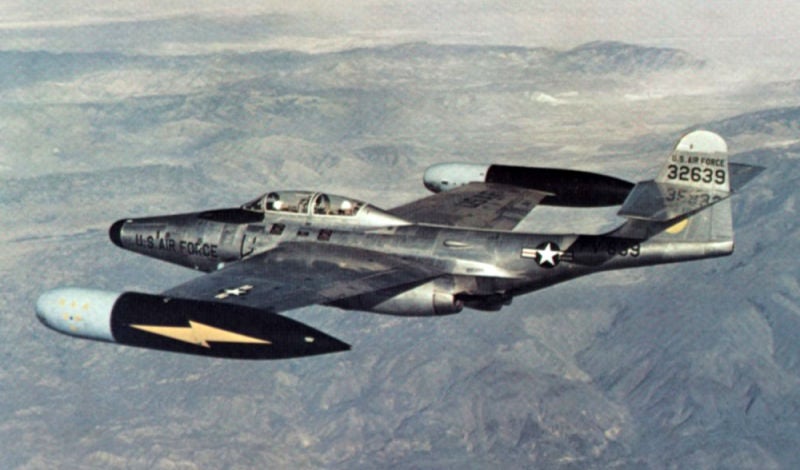
August 16, 1948 – The first flight of the Northrop F-89 Scorpion. When fighter aircraft first flew in WWI, and throughout most of WWII, they were limited to daylight operations in good weather. Rain or fog made most missions impossible, and it wasn’t until the introduction of aerial radar that planes could fight effectively at night. But following the WWII, the continued use of high-flying strategic bombers, and later ones that could carry nuclear weapons, called for a new type of interceptor, one that could fly day or night, and in all weather conditions. The Northrop F-89 Scorpion was the US Air Force’s first interceptor designed specifically for all-weather operations, and it traces its origins back to 1945, when the US Army Air Forces (soon to become the US Air Force in 1947), began seeking a replacement for the Northrop P-69 Black Widow night fighter. The specification for the new interceptor called for a twin-engine aircraft that was heavily armed with six guns—four in the front and two in the rear—that would be set in flexible mounts and capable of being aimed by radar. Additionally, it must be armed with air-to-air rockets stored internally and capable of carrying 1,000 pounds of bombs, plus external rockets, for ground attack. While the USAAF did not specify that a jet engine be used, the top speed requirement could only realistically be achieved with jet power. The USAAF received proposals from Bell, Consolidated-Vultee, Douglas, Goodyear, Curtiss-Wright, and four submissions from Northrop. They chose two finalists, the Curtiss-Wright XP-87 Blackhawk , and one of the Northrop designs, the N-24. When the Air Force chose the N-24 over the Blackhawk, it spelled the end of Curtiss-Wright as an airplane manufacturer, but Northrop’s N-24 bore little resemblance to the final F-89. The N-24 was originally designed with a swept wing, but Northrop redesigned the fighter after the Air Force expressed concerns about early mock ups. Instead, they adopted a thin straight wing to allow the aircraft to carry greater weapons loads while making it more stable at lower speeds. The pilot and radar operator, which were originally housed in separate cockpits, were moved together into a tandem position under a single canopy, and permanent wingtip fuel tanks were added. By this time, the Air Force also dropped the requirement for a rear gun. Production of the F-89A was approved in 1949, but development continued at a rapid pace and only 18 of the original A models were produced before the introduction of the F-89B.

Later upgrades saw the introduction of the F-89D, which added wingtip pods that carried fuel as well as 52 Mk 4 Folding-Fin Aerial Rockets (FFAR, also known as Mighty Mouse) per wing. These missiles were intended to be fired into a formation of bombers, but in practice, they were used mostly for ground attack. The F-89D also had its nose guns removed in favor of a Hughes fire control system, which signaled a shift in doctrine from guns to a reliance on air-to-air missiles and rockets. The F-89D was the major production model of the Scorpion, and 682 out of a total of 1,050 of all variants were built to these specifications. The final derivative, the F-89J, was capable of carrying a pair of AIR-2 Genie nuclear rockets which, like the FFARs, would have been used to destroy formations of bombers. The Scorpion was the first aircraft to fire such a weapon. The Scorpion entered service in 1951, and it served with the Air Defense Command until 1959. After its removal from frontline service, the Scorpion served the Air National Guard until its retirement in 1969. (US Air Force photo)
!!! UNKNOWN CONTENT TYPE !!!
!!! UNKNOWN CONTENT TYPE !!!
!!! UNKNOWN CONTENT TYPE !!!
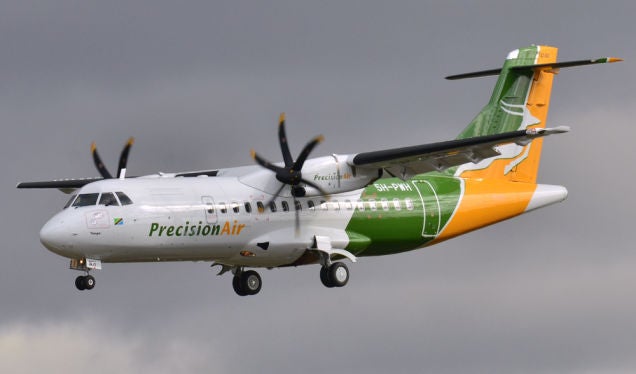
August 16, 1984 – The first flight of the ATR 42, a twin-turboprop regional airliner developed through a partnership between between France and Italy known as ATR , which stands for both Avions de transport regional and Aerei da Transport Regionale , both of which translate as Regional Air Transport. The ATR 42 can accommodate 40-52 passengers, and it entered service with Air Littoral of France in 1985. It is powered by two Pratt & Whitney Canada PW120 , PW121 or PW127 engines depending on variant, and served as the basis for the enlarged ATR 72 , which first flew in 1988. As of 2014, 436 have been built, and the airliner remains in production. (Photo by Laurent Errera via Wikimedia Commons )
!!! UNKNOWN CONTENT TYPE !!!
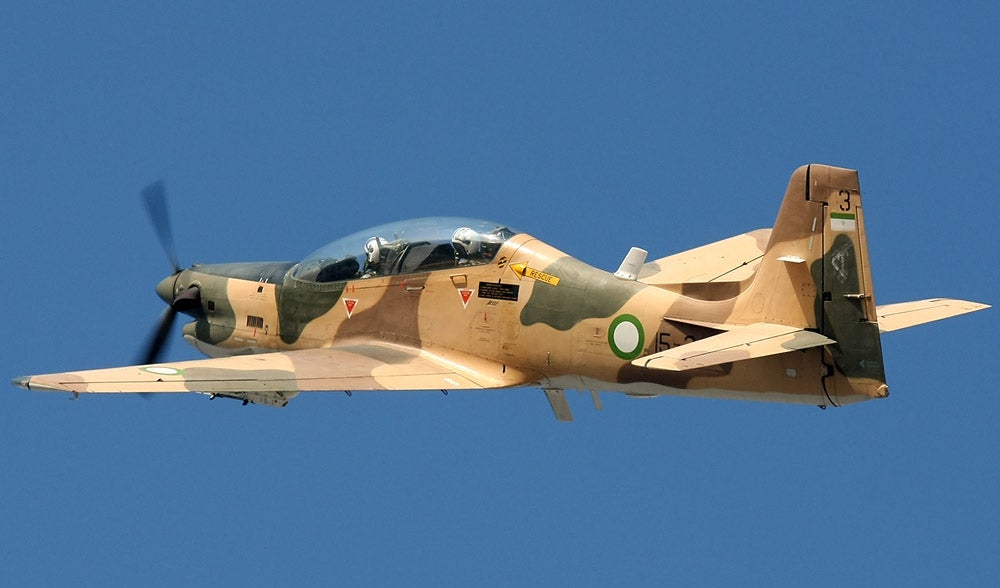
August 16, 1980 – The first flight of the Embraer EMB 312 Tucano. In an effort to reduce dependence on foreign aircraft, the Brazilian government established Empresa Brasileira de Aeronáutica ( Embraer ) in 1969. In 1977, work began on a two-seat aircraft powered by a turboprop engine for both pilot training and counterinsurgency (COIN) missions. The 312 was the first purpose-built turboprop to have jet flight characteristics, and its raised rear seat provides unobstructed views for the back seat pilot. The 312 features ejection seats for both crew members, and combined controls for combined throttle and torque control to mimic jet fighter flight. The Tucano was widely exported, and a total of 624 were produced from 1980-1996. (Photo by Shahram Sharifi via Wikimedia Commons )
!!! UNKNOWN CONTENT TYPE !!!

August 16, 1965 – The crash of United Airlines Flight 389, regularly scheduled Boeing 727 service from New York City to Chicago. The aircraft, a 727-22 (N7036U), had only been in service with United for two and a half months before the crash, and had completed only 138 cycles (landing and takeoff). The aircraft was descending from 35,000 feet to 6,000 feet on approach to O’Hare Airport when, for unknown reasons, the pilots failed to level of and simply flew into Lake Michigan. Weather was not a factor, and the aircraft was functioning properly. The official NTSB report was unable to determine the exact reason for the crash, though some have surmised that the pilots misread their 3-point altimeter by 10,000 feet. The crash killed all 30 passengers and crew on board, and marked the first loss of a 727. (Photo—not crash aircraft—by Dmitry Avdeev via Wikimedia Commons )
!!! UNKNOWN CONTENT TYPE !!!
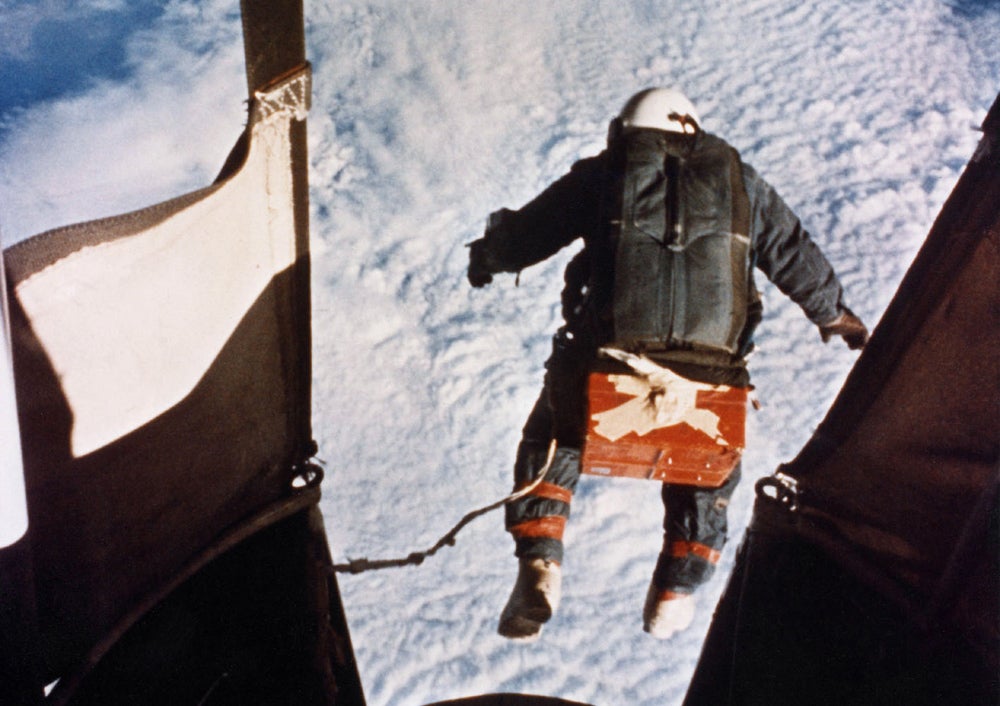
August 16, 1960 – US Air Force captain Joseph Kittinger sets a world recorder the highest parachute jump and longest freefall. In order to test a parachute system for pilots operating from high altitudes, the US Air Force initiated Project Excelsior in 1958. During the program, Captain Joseph Kittinger made three jumps from a stratospheric balloon, each from a higher altitude. The third jump was taken from an altitude of 102,800 feet, breaking a previous record set by Major David Simons during Project Manhigh in 1957. Wearing a pressure suit, Kittinger fell for 85,400 feet before deploying a small stabilizer parachute, setting another record for the longest freefall of 4 minutes 36 seconds. Kittinger’s record stood until 2012, when Felix Baumgartner leapt from 128,000 feet, a record that stood for just two years before it was broken by Alan Eustace , who jumped from 135,890 in 2014. (US Air Force photo)
!!! UNKNOWN CONTENT TYPE !!!
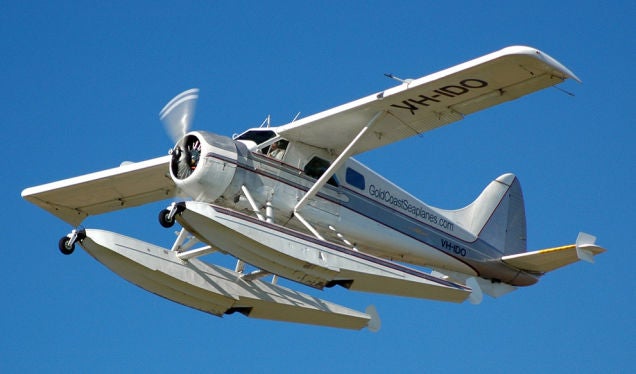
August 16, 1947 – The first flight of the de Havilland Canada DHC-2 Beaver, a high-wing monoplane developed specifically for short takeoff and landing (STOL) performance and used widely around the world as a bush plane . During the design phase, DHC sought input from famed bush pilot Punch Dinkins and others, all of whom requested an aircraft with a huge amount of power and STOL capability. Full-sized doors were fitted on either side of the aircraft for ease of loading and unloading, and are large enough to fit an international standard drum (45 Imperial gallons, 55 US gallons). Pratt & Whitney Canada supplied surplus R-985 Wasp Junior engines that provided all the power the pilots requested and more. Initial sales were slow, but improved significantly when the US Army purchased hundreds of Beavers as the U-6A. A total of 1,657 Beavers were built, and many remain flying, though parts are becoming difficult to find for the WWII-era engines, leading some to upgrade the old airframe with more modern engines or even turboprop engines. (Photo by Robert Frola via Wikimedia Commons )
!!! UNKNOWN CONTENT TYPE !!!
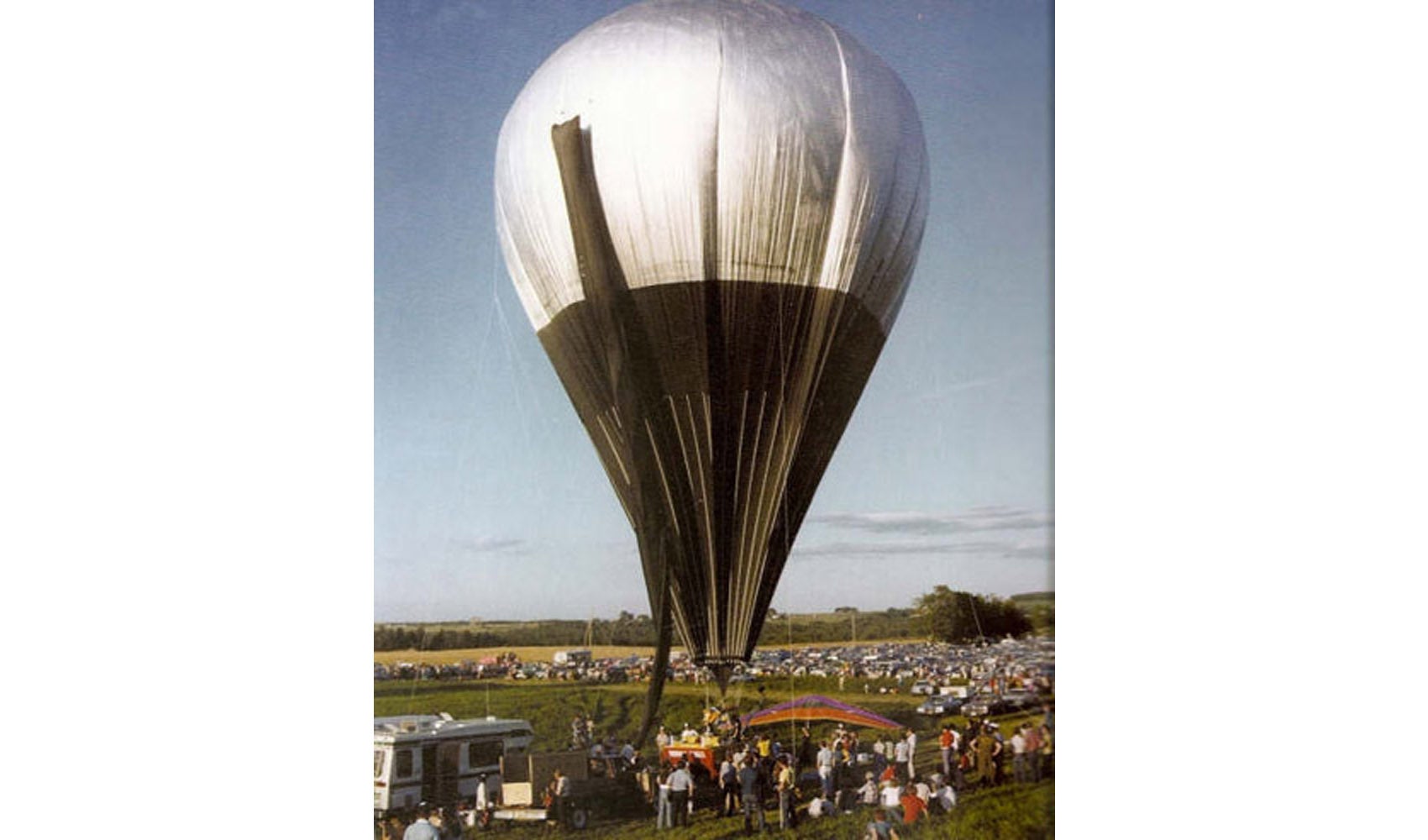
August 17, 1978 – The crew of the Double Eagle II makes the first transatlantic crossing by balloon. Balloonists had been trying to cross the Atlantic Ocean since 1873, but it wasn’t until 1978 that balloonists Ben Abruzzo, Maxie Anderson, and Larry Newman reached to France after departing from Presque Isle, Maine on August 11. Newman had planned on hang gliding down to European soil after the crossing, but the glider had to be jettisoned as ballast during flight. After crossing the Irish coast, French officials offered to let them land at Le Bourget Airport, where Charles Lindbergh landed in 1937, but the crew instead chose to land in a field in the suburbs of Paris. The gondola of the balloon is now on display at the Steven F. Udvar-Hazy Center near Washington, DC. (Photo by Paul Cyr via Crown of Maine Photography )
!!! UNKNOWN CONTENT TYPE !!!
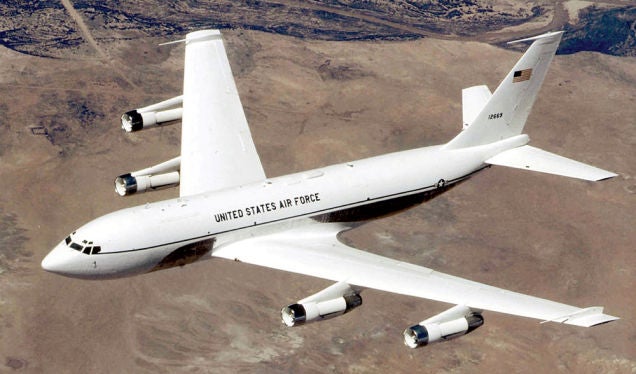
August 17, 1956 – The first flight of the Boeing C-135 Stratolifter,
a transport aircraft that was developed alongside the
KC-135 Stratotanker
. Boeing had developed the
Model 367-80
, better known as the “Dash 80,” in response to a United States Air Force request for a jet-powered tanker. Though the vast majority of the 820 aircraft were built as KC-135 tankers, a number were built as transport aircraft, with the C-135A having accommodations for 126 passengers. The C-135B received more powerful engines, and 5 were designed for VIP transport as the VC-135B. Other variants were flown for weather reconnaissance, and a number were sold to France as tankers. The C-135 received the internal Boeing designation 717, though that number was later given to the
McDonnell Douglas MD-95
after the two companies merged.
(US Air Force photo)
!!! UNKNOWN CONTENT TYPE !!!
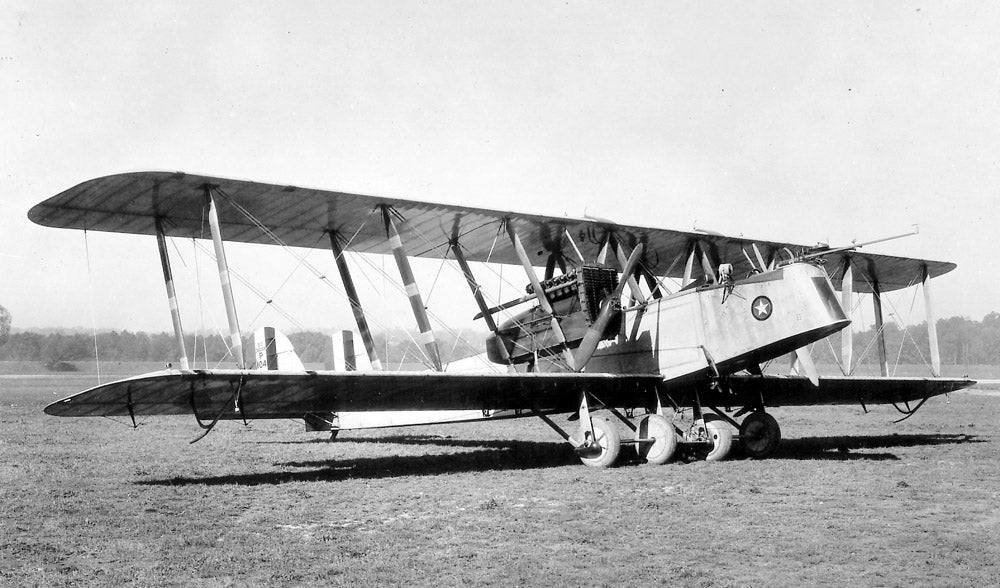
August 17, 1918 – The first flight of the Martin MB-1, a large biplane bomber built for the US Army Air Service and the first purpose-built bomber produced in the United States. Martin designed the MB-1 in response to the similarly-sized Handley Page Type O , and it was powered by two Liberty L-12 twelve-cylinder liquid-cooled engines that provided a top speed of 105 mph. The MB-1 could carry a total of 1,040 pounds of bombs and five .30 caliber defensive machine guns. The MB-1 was configured for both reconnaissance and bombing missions, as well as a torpedo bomber variant for the US Navy and US Marine Corps, and were also flown as a mail plane for the US Postal Service. A total of 20 were built. (US Air Force photo)
!!! UNKNOWN CONTENT TYPE !!!
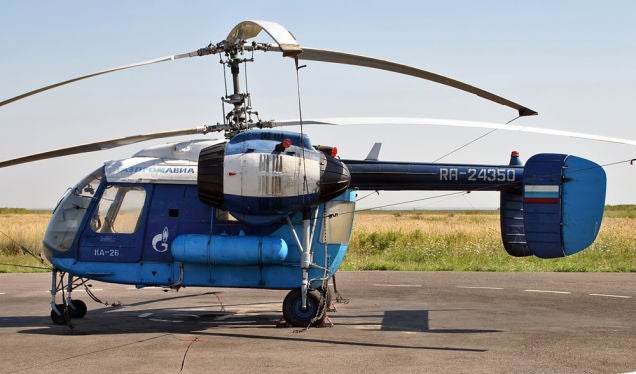
August 18, 1965 – The first flight of the Kamov Ka-26,
a light utility aircraft that was built in large numbers and has found its most popular use as an agricultural top dresser. The Ka-26 (NATO reporting name
Hoodlum
) is powered by two
Vedenyev M14P
nine-cylinder radial engines housed in external pods that drive a set of
co-axial rotors
, thus eliminating the need for a counter-torque rotor at the rear. A removable pod behind the cockpit can be configured for passengers, medevac or light cargo. A chemical hopper can also be fitted for agricultural sue. A total of 816 were produced from 1969-1985, and it was later developed into the more powerful
Kamov Ka-126
and
Ka-226
.
(Photo by Igor Dvurekov via
Wikimedia Commons
)
!!! UNKNOWN CONTENT TYPE !!!
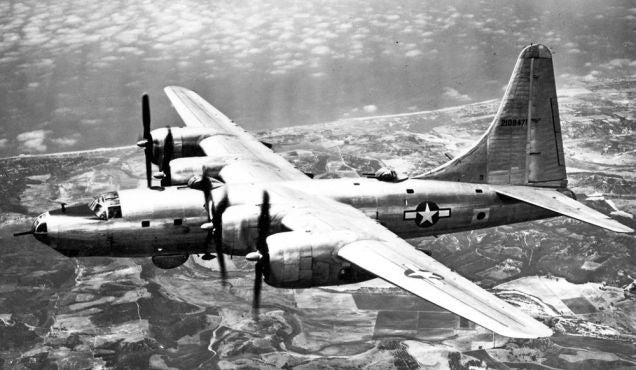
August 18, 1945 – The US suffers its last air combat casualty of WWII. Though the Japanese government had signaled its surrender three days earlier, some Japanese pilots continued to attack American bombers carrying out reconnaissance over the Japanese homeland. Two Consolidated B-32 Dominators , tasked with a photo reconnaissance mission over Tokyo, were attacked by 17 Japanese fighters, heavily damaging one of the Dominators. Three crew members were seriously wounded and 19-year-old Sergeant Anthony Marchione, a photographer’s assistant, was killed. Following the attack, the propellers were removed from all Japanese aircraft to prevent future attacks. (US Air Force photo)
!!! UNKNOWN CONTENT TYPE !!!
!!! UNKNOWN CONTENT TYPE !!!
!!! UNKNOWN CONTENT TYPE !!!
!!! UNKNOWN CONTENT TYPE !!!
!!! UNKNOWN CONTENT TYPE !!!
!!! UNKNOWN CONTENT TYPE !!!
!!! UNKNOWN CONTENT TYPE !!!
If you enjoy these Aviation History posts, please let me know in the comments. And if you missed any of the past articles, you can find them all at Planelopnik History . You can also find more stories about aviation and aviators at Wingspan and Planes You’ve (Probably) Never Heard Of .
!!! UNKNOWN CONTENT TYPE !!!
 "Highlander-Datsuns are Forever" (jamesbowland)
"Highlander-Datsuns are Forever" (jamesbowland)
08/18/2017 at 13:06, STARS: 1
Seems like jet engines on older planes like the 727 look abnormally small compared to modern engines.
 "Smallbear wants a modern Syclone, local Maple Leafs spammer" (smallbear94)
"Smallbear wants a modern Syclone, local Maple Leafs spammer" (smallbear94)
08/18/2017 at 13:11, STARS: 1
They are. The 707 and DC-8 were pure turbojet engines at first, the later models, along with the 727 and early 737, got turbofans—but a low bypass turbofan, not the monsters we get now.
 "ttyymmnn" (ttyymmnn)
"ttyymmnn" (ttyymmnn)
08/18/2017 at 13:11, STARS: 2
They are. Those are turbojets , versus the modern high-bypass turbofans . Turbofans are significantly more economical to operate.
 "Chariotoflove" (chariotoflove)
"Chariotoflove" (chariotoflove)
08/18/2017 at 13:12, STARS: 0
That Scorpion must have looked fantastic, like something Flash Gordon would would fly, back in in those years just after WWII.
Does Embraer still make military aircraft?
 "Cé hé sin" (michael-m-mouse)
"Cé hé sin" (michael-m-mouse)
08/18/2017 at 13:14, STARS: 1
 "ttyymmnn" (ttyymmnn)
"ttyymmnn" (ttyymmnn)
08/18/2017 at 13:15, STARS: 1
Does Embraer still make military aircraft?
Yes .
 "Highlander-Datsuns are Forever" (jamesbowland)
"Highlander-Datsuns are Forever" (jamesbowland)
08/18/2017 at 13:18, STARS: 0
I remember 727's as having loads of thrust on take off. Doesn’t see proportionate to their size.
 "Chariotoflove" (chariotoflove)
"Chariotoflove" (chariotoflove)
08/18/2017 at 13:19, STARS: 1
Sweet. Thanks for doing the work so I didn’t have to be bothered to Google it for myself. :)
 "Chariotoflove" (chariotoflove)
"Chariotoflove" (chariotoflove)
08/18/2017 at 13:20, STARS: 0
gib pls
 "ttyymmnn" (ttyymmnn)
"ttyymmnn" (ttyymmnn)
08/18/2017 at 13:29, STARS: 1
The USAF is considering the Super Tucano as part of its A-X program to find a cheap replacement for the A-10. With modern turboprops having jet-like performance, there’s really no need for a complex jet plane over places like Syria and Afghanistan.
 "ttyymmnn" (ttyymmnn)
"ttyymmnn" (ttyymmnn)
08/18/2017 at 13:30, STARS: 1
Those engines were built with grunt in mind, but they sucked serious amounts of fuel. I remember flying the 727 and 707 when I was a kid. The pilots would set the brakes and run the engines up, then release the brakes. It felt kind of like dumping the clutch.
 "Viggen" (viggen37)
"Viggen" (viggen37)
08/18/2017 at 13:30, STARS: 2
Two of my favorite things in one post: Cold War interceptors and high altitude research. Plus anything KC-135 related.
 "Chariotoflove" (chariotoflove)
"Chariotoflove" (chariotoflove)
08/18/2017 at 13:31, STARS: 0
That makes sense. I just never think of the US military as giving a contract to a non-domestic provider.
 "ttyymmnn" (ttyymmnn)
"ttyymmnn" (ttyymmnn)
08/18/2017 at 13:35, STARS: 1
There was a great hue and cry when the Air Force announced that they selected Airbus to build the next generation air tanker. John McCain was one of the most vocal opponents, and they did a do-over on the fly off and, miraculously, Boeing won the second time around.
The Air Force also considered using an A380 as the new Air Force One. But I really can’t imagine the visuals of having the American president arrive in a European airplane.
 "facw" (facw)
"facw" (facw)
08/18/2017 at 13:44, STARS: 1
We give tons of money to BAE, and they are not the only foreign company doing US defense work. Generally that work is done in the US, and I think that would be the case for the Super Tucano as well.
 "Chariotoflove" (chariotoflove)
"Chariotoflove" (chariotoflove)
08/18/2017 at 13:49, STARS: 0
No. I mean, I’m good with globalization, but some things are symbolic as part of their job, and Air Force One is one of those things.
 "ttyymmnn" (ttyymmnn)
"ttyymmnn" (ttyymmnn)
08/18/2017 at 13:51, STARS: 1
Absolutely agree.
 "Chariotoflove" (chariotoflove)
"Chariotoflove" (chariotoflove)
08/18/2017 at 13:51, STARS: 1
I suspect that’s the important thing, especially with our current administration and any new contracts.
 "Highlander-Datsuns are Forever" (jamesbowland)
"Highlander-Datsuns are Forever" (jamesbowland)
08/18/2017 at 13:51, STARS: 2
That’s what i remember too. Take-offs these days are so not dramatic. The plane gently accelerates to rotation speed, next thing you know I have my cookie and coffee and am 3rd inline for the toilet to pee.
 "facw" (facw)
"facw" (facw)
08/18/2017 at 13:56, STARS: 0
Yep, though even that is not necessarily enough. With the tankers, Airbus was going to build them stateside, but the deal still got overturned because they weren’t Boeing. I suspect Austal’s foreignness puts them at a strong disadvantage as the Navy finally picks a single LCS design as well.

08/18/2017 at 15:29, STARS: 0
AFAIK, the only action the F-89 ever saw was against an F6F-5K Hellcat drone,and the Scorpion didn’t acquit itself well.
In all, the Air Force element fired 208 rockets and were unable to shoot the Hellcat down.
!!! UNKNOWN CONTENT TYPE !!!
The first set of rockets started brush fires 7 miles (11 km) northeast from Castaic which burned 150 acres (61 ha) above the old Ridge Route near Bouquet Canyon.
Some of the second set of rockets reached the ground near the city of Newhall. In Placerita Canyon, one rocket was seen bouncing along the ground and starting a series of fires near a park, while others set fire to oil sumps owned by the Indian Oil Co. The fires reached within 300 feet (91 m) of the Bermite Powder explosives plant. Other rockets started fires in the proximity of Soledad Canyon , near Mount Gleason, burning more than 350 acres (140 ha) of rough brush.
The final set of rockets were fired while the Scorpions faced Palmdale; many landed within the town. “As the drone passed over Palmdale’s downtown, Mighty Mouse rockets fell like hail.“ Edna Carlson, who lived in the home on Third Street East, said that a chunk of shrapnel from one Air Force rocket burst through the front window of her home, ricocheted off the ceiling, went through a wall and came to rest in a kitchen cupboard.” More rocket fragments completely penetrated a home and garage on 4th Street East. One rocket landed right in front of a vehicle being driven west on California State Route 138 near Tenth Street West, of which one tire was shredded and many holes were punched through the car’s body. Two men in Placerita Canyon had been eating in their utility truck; right after they left it to sit under the shade of a tree, a rocket struck the truck, destroying it. Many fires were started near Santa Clarita , with three large ones and many smaller ones in and around Palmdale.
It took 500 firefighters two days to bring the brushfires under control. 1,000 acres (400 ha) were burned. There were no fatalities
 "ttyymmnn" (ttyymmnn)
"ttyymmnn" (ttyymmnn)
08/18/2017 at 15:34, STARS: 1
In all fairness, the rockets were meant to be fired into a swarm of bombers, where the likelihood of hitting something—anything—was much higher. Maybe they should have sent something up that had guns. Like another Hellcat.

08/18/2017 at 15:42, STARS: 1
Yeah, the radar targeting system had malfunctioned, and the manual gun/rocket sights had been removed (‘cause, y’know, radar ). so the pilots were basically firing blind. Still though, not the best outing.